#JS📔: Mastering Promises in Javascript
From Basic to Advance Patterns | ♻️ Knowledge seeks community 🫶 #8
Hey, hey, 👋
Stefania here 🙋♀️.
How are you doing ?
Not so long ago, I was reminded of the importance of Promises when I had to handle multiple tasks simultaneously and in batches. I realized I felt a bit rusty since I’ve been relying almost exclusively on async/await lately.
Revisiting Promises made me appreciate how powerful they are for managing complex async flows—and that’s exactly what this article aims to explore.
🌟Introduction
We’ve all encountered at some point the need to handle multiple tasks simultaneously—like fetching data, processing files, or updating the UI. That’s where Promises come in.
Promises were introduced in ES6 in order to provide a cleaner and more structured way to manage asynchronous operations. They also came as a solution to nesting multiple callbacks which in some cases would lead to a callback hell. ⬇️
Understanding Promises
A Promise represents a value that may be available now, in the future, or never. It has three possible states:
Pending – The async operation is still in progress.
Fulfilled – The operation completed successfully.
Rejected – The operation failed.
Creating a Promise using the new Promise() constructor:
Consuming its results with then() and catch() :
Appending finally() - always executing after completion:
finally() - will run regardless of whether a Promise is resolved or rejected.
Chaining Promises
One of the biggest advantages of Promises is that you can chain them to create a clean flow of async operations:
⇒ Each then() returns a new Promise, allowing you to chain them.
⇒ Errors are propagated down the chain to the nearest catch()
Promise Methods
Parallel Execution with Promise.all()
Promise.all() is used to execute multiple asynchronous tasks in parallel and wait for all of them to complete:
⇒ If any Promise in Promise.all() fails, the entire operation will reject.
Race Conditions with Promise.race()
Promise.race() returns the result of the first Promise that resolves or rejects:
⇒ Useful for setting timeouts or handling the fastest response.
Handling multiple results with Promise.allSettled()
Promise.allSettled() waits for all Promises to settle and returns an array of status objects:
⇒ Great for scenarios where you want to handle both success and failure cases without short-circuiting the execution.
Advanced Patterns and Best Practices
Mixing Promises with
async/await:Parallel Execution with
Promise.all+async/await:Retrying with Exponential Backoff
If a request fails, retry it with increasing delays:
Best Practices for Using Promises
Always handle rejections: Unhandled Promise rejections can cause silent failures.
Return Promises in chain functions: This ensures proper error propagation.
Avoid nesting Promises: Use chaining to maintain flat code structure.
Keep Promise chains readable: Consider extracting complex operations into named functions.
Use async/await for complex flows: When dealing with multiple conditional async operations.
🌟 Key takeaways
Promises provide a structured way to handle async operations.
Use
Promise.all,Promise.race,Promise.any, andPromise.allSettledbased on your use case.Combine Promises with
async/awaitfor better readability and performance.Handle errors properly to avoid unhandled rejections.
Retry with exponential backoff when necessary.
JavaScript Promises provide a powerful abstraction for handling asynchronous operations, significantly improving code readability and maintainability compared to callback-based approaches. With the addition of async/await syntax, working with asynchronous code in JavaScript has never been more elegant.
Understanding Promises is essential for modern JavaScript development, especially for web applications that rely heavily on asynchronous operations like API calls, file operations, and timers.
Until next time 👋,
Stefania
P.S. Don’t forget to like, comment, and share with others if you found this helpful!
Other articles from the ♻️ Knowledge seeks community 🫶 collection: https://stefsdevnotes.substack.com/t/knowledgeseekscommunity
👋 Get in touch
Feel free to reach out to me here on Substack or on LinkedIn.



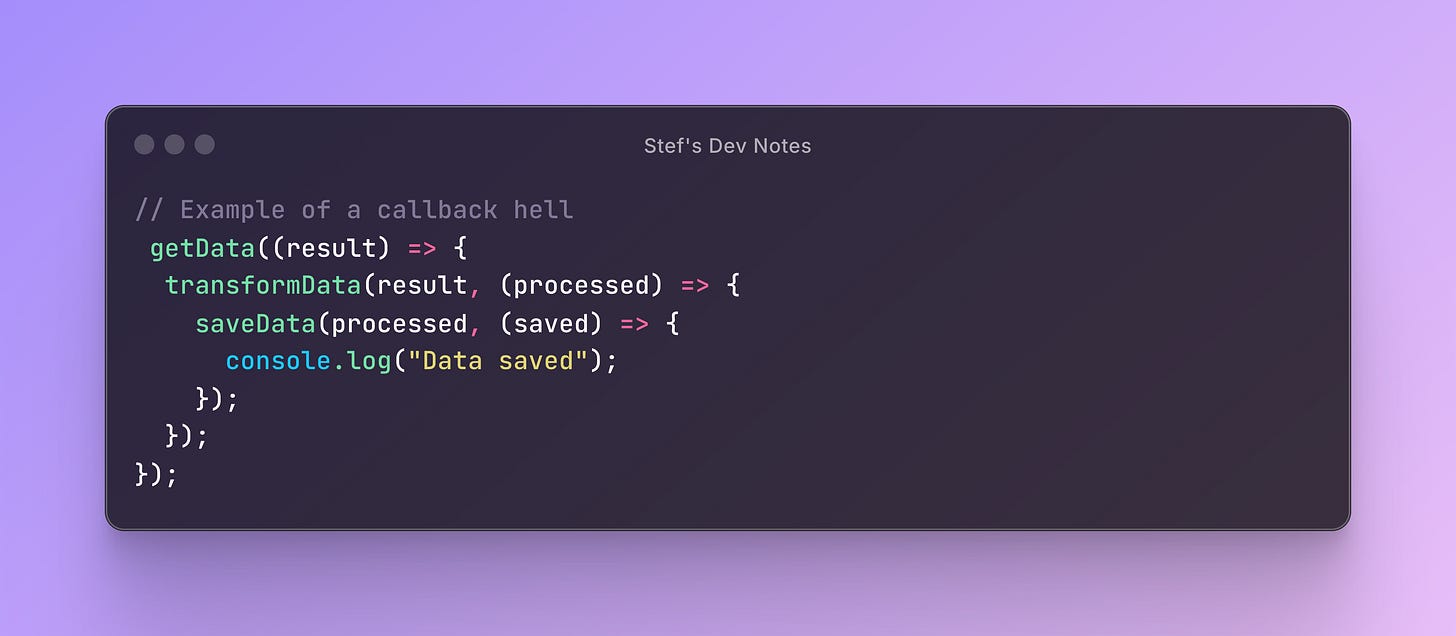


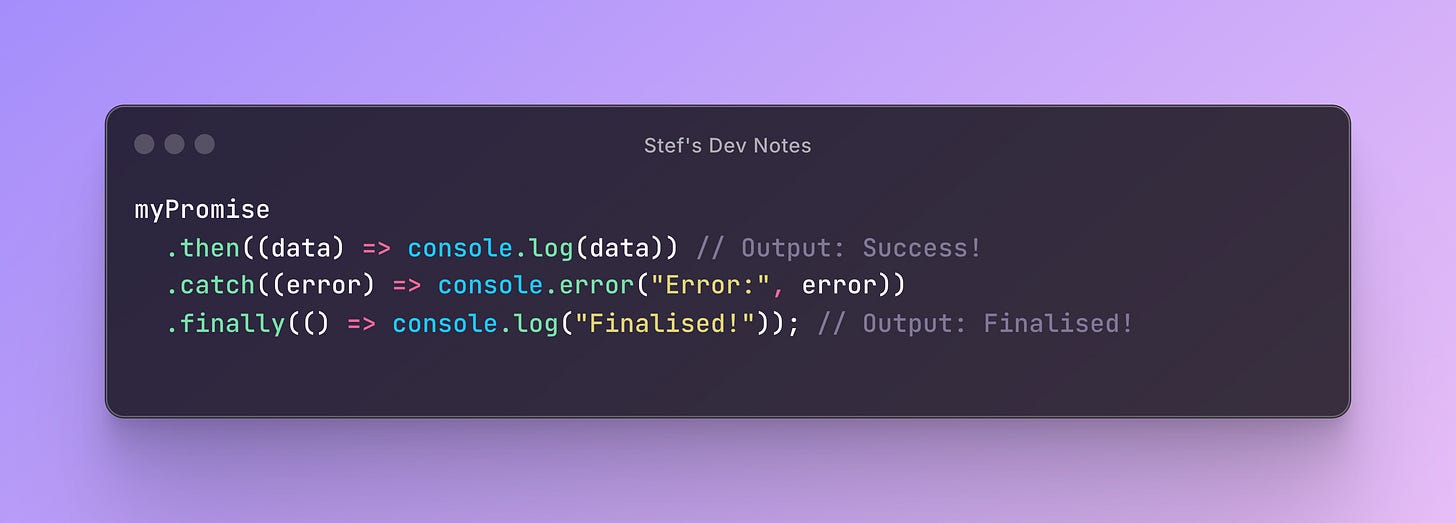

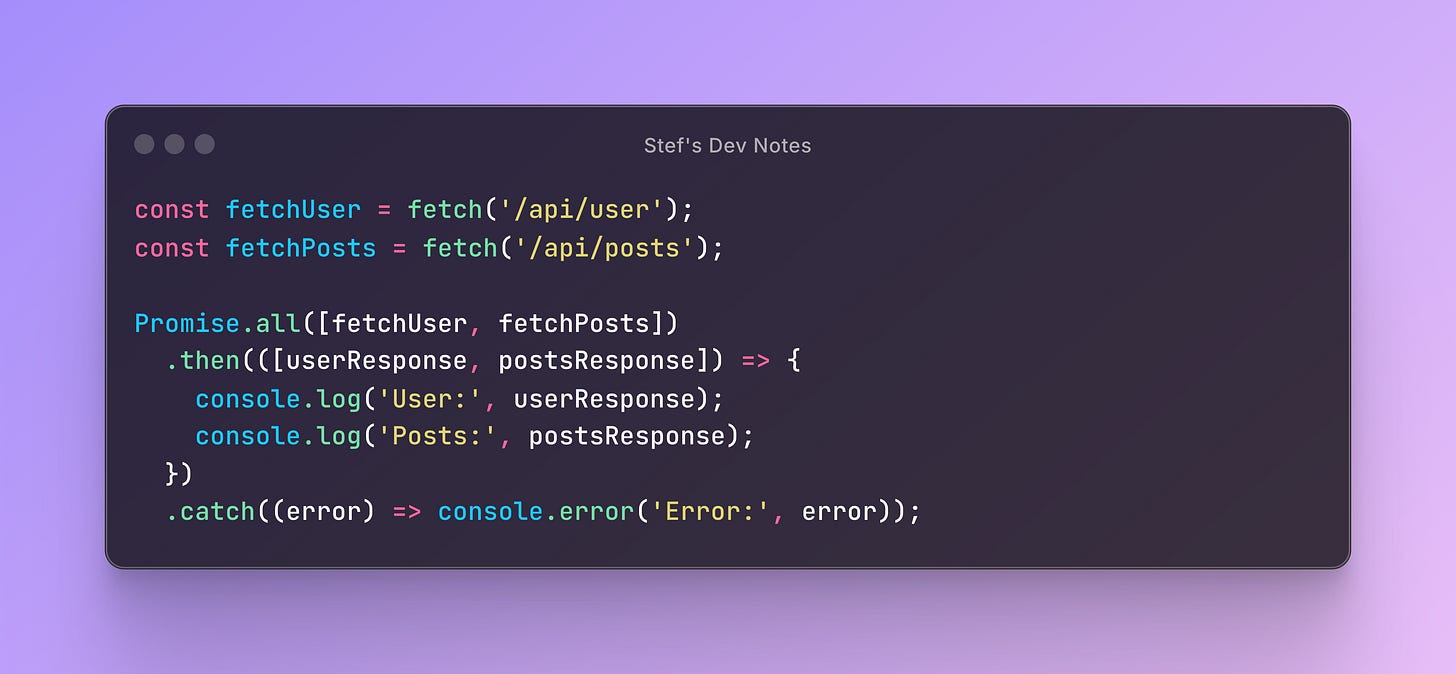

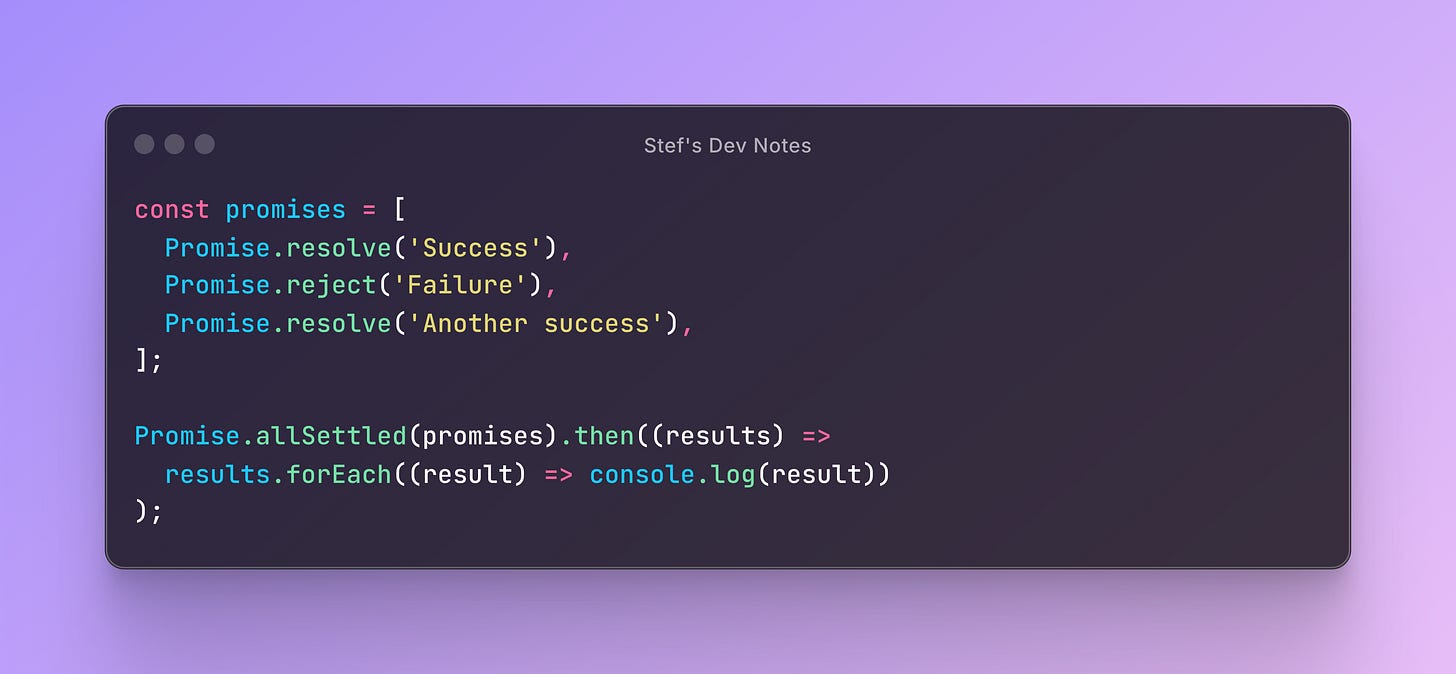

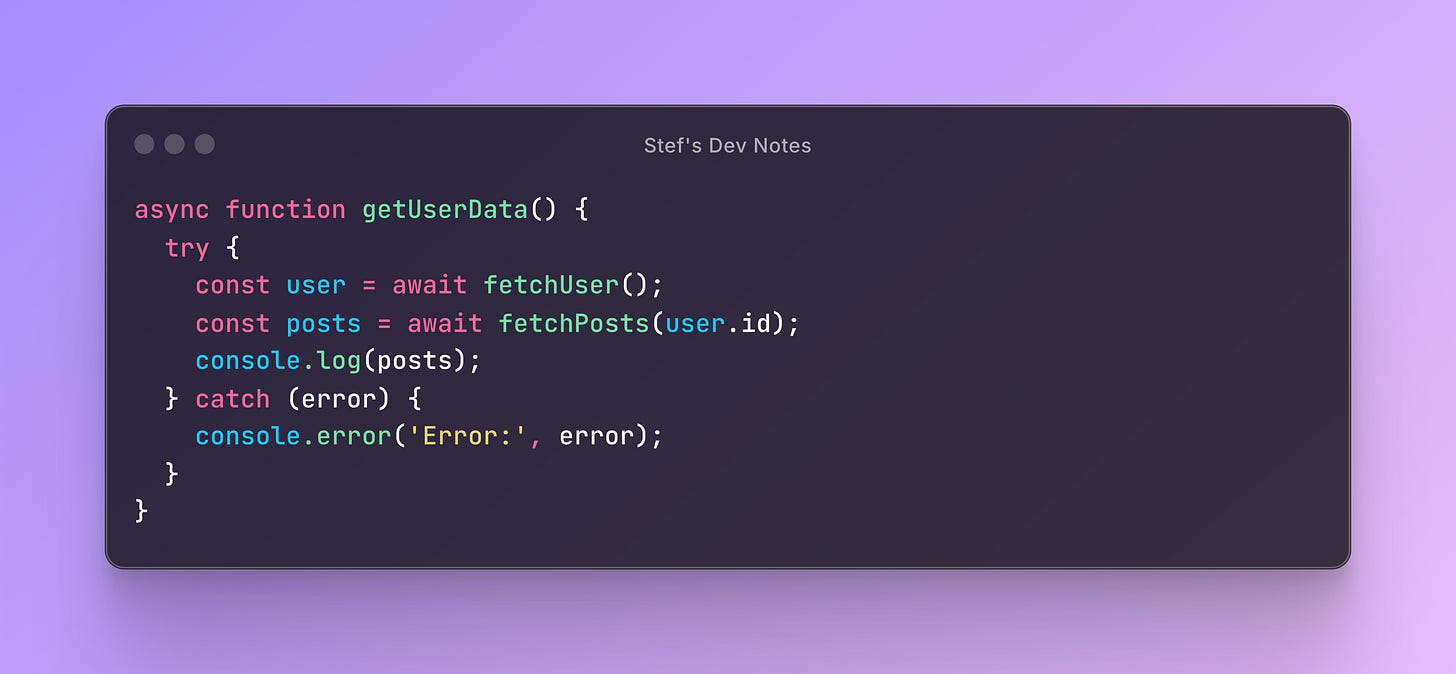

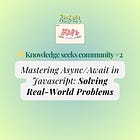
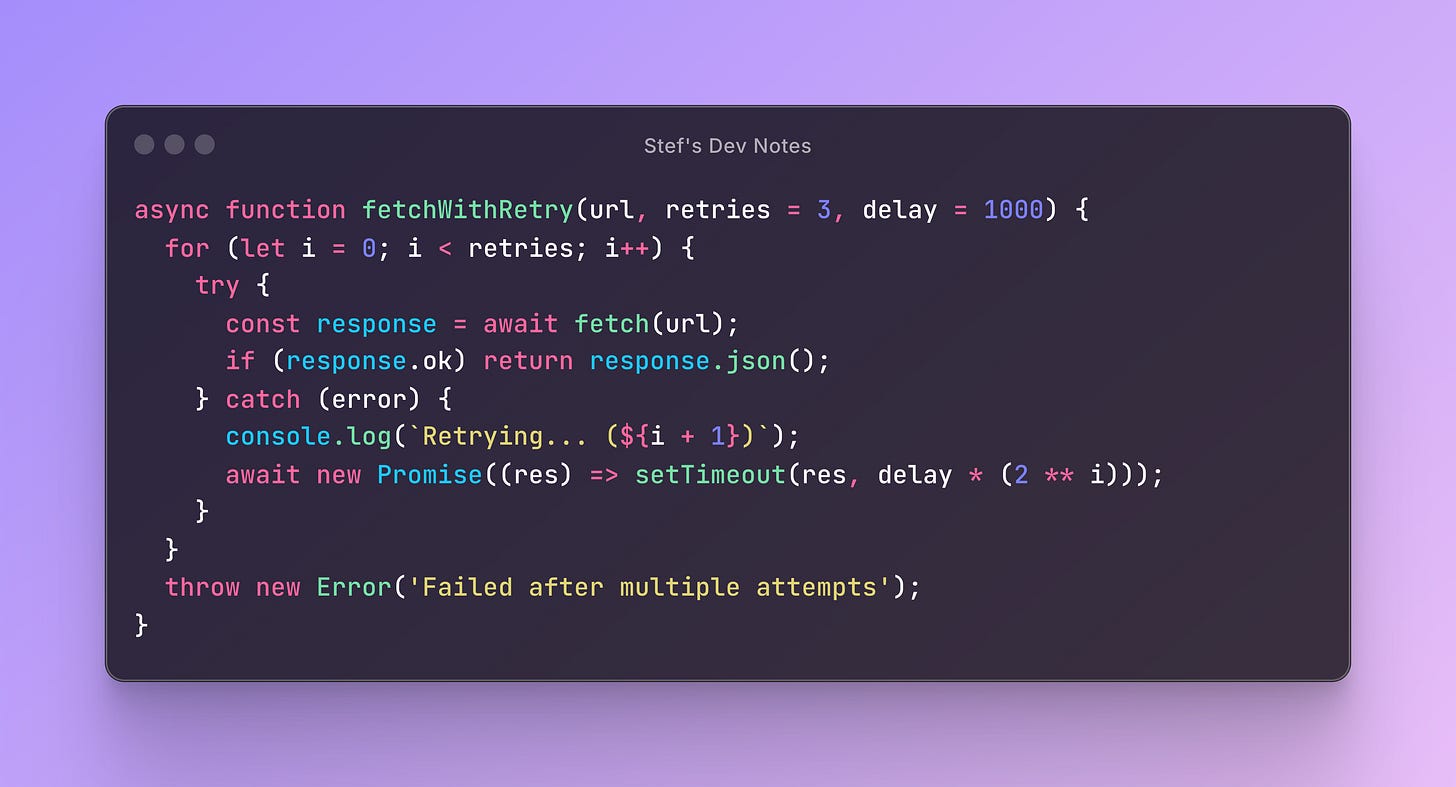
Great work, Stef! 👏 I’ve learned new things about Promise, thanks for sharing.